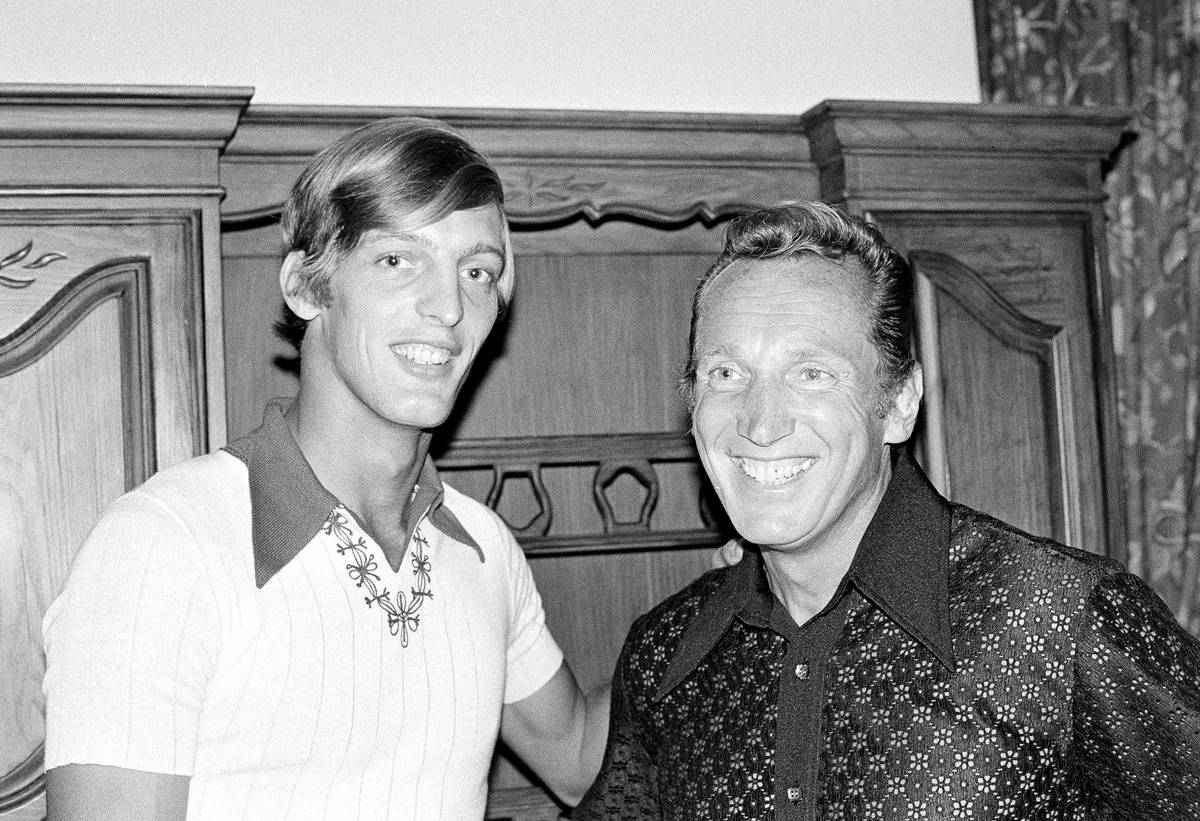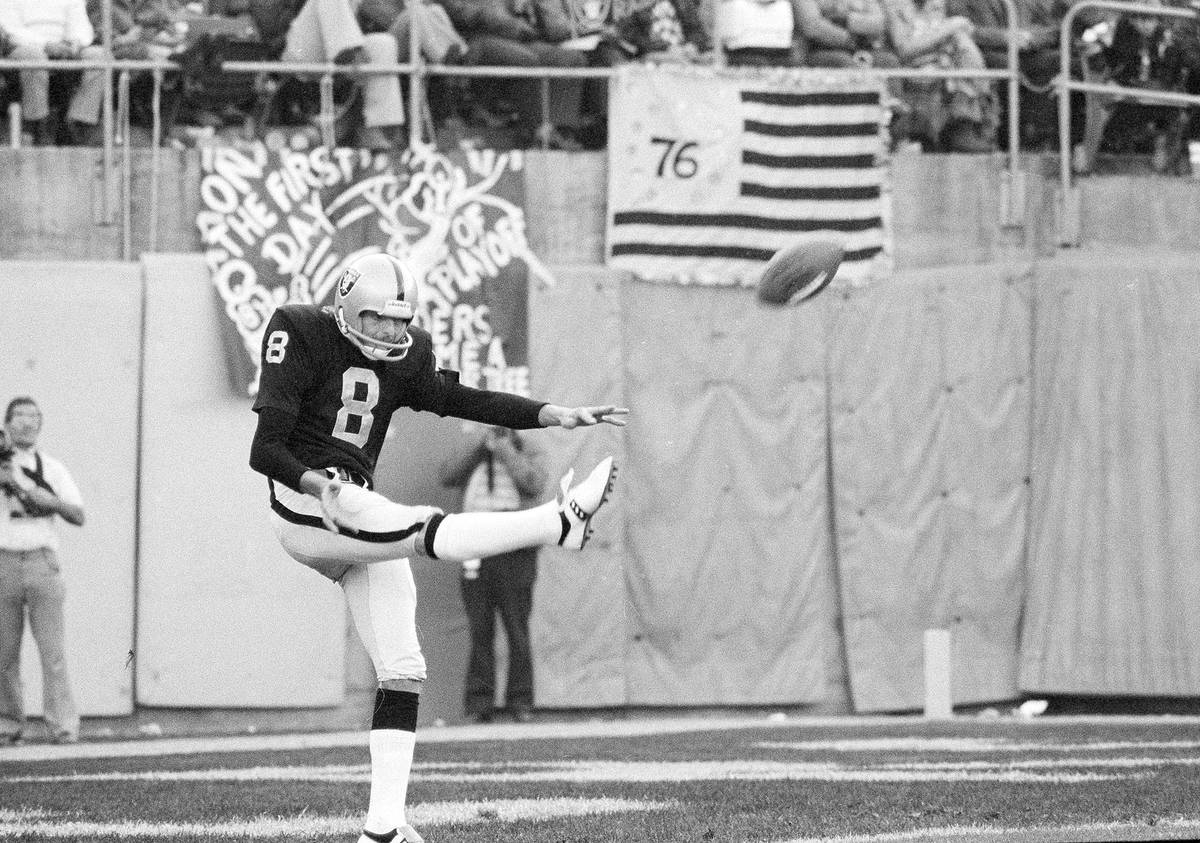Raiders punter Ray Guy was the ultimate weapon
Editor’s note: This is part of an occasional series acquainting fans with the Raiders’ illustrious 60-year history as the team moves to Las Vegas for the 2020 season.
Before Ray Guy came along to change the perception of NFL punters, the task was generally handled by players who also played other positions.
For instance, the Green Bay Packers won the first two Super Bowls with running back Donny Anderson carrying out punting duties. Backup quarterbacks Steve Spurrier of the San Francisco 49ers and Bob Lee of the Minnesota Vikings handled punting duties in the 1970s. Linebacker Paul Maguire also punted for the San Diego Chargers and Buffalo Bills in the 1960s.
The doubling up reflected a time when the job of punter was almost an afterthought. But Guy and his powerful right leg changed that. Upon his arrival, punting suddenly created excitement.
“Any time he got back there for a punt, fans watched like they were watching the ball on the 2-yard line with the game on the line,” Raiders Hall of Fame cornerback Willie Brown told the Los Angeles Times in 2014. “They knew he was going to do something special.”
It wasn’t just the amazing height and length of Guy’s punts that made him one of the greatest NFL players of all time and the only punter inducted into the Pro Football Hall of Fame. It was the impact he had on games by coming up with a booming kick just when the Raiders needed to flip field position.
“This guy was an athlete, not just a punter,” Brown said. “He saved so many games for us. A third of this game is field position, and if the offense was backed up to the end zone, they didn’t worry about it. There were games when he was our best defensive player by far.”
A standout athlete growing up in Thomson, Georgia — he was drafted by the Cincinnati Reds (twice), Atlanta Braves and Houston Astros between high school and college — Guy was recruited to play football and baseball for Southern Mississippi by assistant coach Charles “Hamp” Cook.
The coach once told CantonRep.com that he was actually in town to recruit a player from another school only to zero in on the 6-foot-3-inch, 190-pound Guy, who played quarterback, safety, punter and kicker for Thomson High.
“We weren’t as sophisticated back then,” Cook told CantonRep.com. “But I’d say we stumbled up on a pretty good one, huh? It was a no-brainer. He could have been our quarterback, too, but we already had one. He was that good.”
The Raiders, who were essentially set at every position by the time of the 1973 draft, used their first-round pick, the 23rd overall, on Guy. It was the first time in NFL history a team invested a first-round pick on a punter.
Guy averaged 45.3 yards per punt in his rookie year and went on to lead the NFL in punting in three of his first five seasons. In doing so, he became much more than a punter. He was a weapon.
Guy played 14 seasons with the Raiders, playing on three Super Bowl championship teams and appearing in seven AFC Championship games. Over his career he punted 1,049 times, averaging 42.4 yards per punt. The NFL did not track punts inside the opponents’ 20-yard-line in Guy’s first three years. But for his career, he had 210 punts of that variety. And he punted 619 times to start his career before one got blocked
As his first head coach, John Madden, told the Los Angeles Times: “You know all about the punts and the height and the leg and all that stuff. But field position is so big. It gave our quarterbacks confidence. I used to tell them, look, on third down if you’ve got third-and-long and there’s nothing there, you don’t have to force anything because if we have an incomplete pass the worst thing we have to do is Ray Guy punts. And that’s not bad.”
All of which eventually led him to the Hall of Fame, the only punter to be inducted. Albeit after a long wait.
“It never got to the point where I was convinced I wouldn’t get in. … It was close,” Guy told SFGATE upon getting the call. “It definitely played on my mind. What frustrated me the most was the perception that a punter wasn’t important enough, didn’t belong alongside the big legends that played the ‘whole’ game.
“Try playing the game without a punter. Go in there with 10 players and see what happens.”
Contact Vincent Bonsignore at vbonsignore@reviewjournal.com. Follow @VinnyBonsignore onTwitter.



















